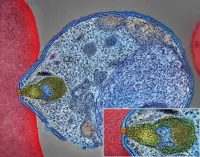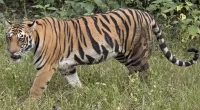Mosquitoes (Culicidae) are a diverse family of small flies, comprising over 3,600 species. Their name, derived from Spanish and Portuguese, means "little fly." They possess slender bodies, one pair of wings, and elongated mouthparts. While all mosquitoes consume nectar, many female species also consume blood, a trait that evolved over time. From an evolutionary standpoint, they are considered micropredators. However, medical parasitologists classify them as disease vectors, as they transmit pathogens like protozoa, bacteria, and viruses between hosts. Their evolutionary diversification took place during the Cretaceous period.
1901: Frederick Vincent Theobald published monograph on Culicidae
In 1901, Frederick Vincent Theobald, an English entomologist, advanced mosquito taxonomy when he published his 5-volume monograph on the Culicidae.
1912: Release of 'How a Mosquito Operates'
In 1912, Winsor McCay's film "How a Mosquito Operates" was released, considered one of the earliest works of animation.
1940: Manufacturing of the de Havilland Mosquito begins
In 1940, manufacturing began for the de Havilland Mosquito, a high-speed aircraft.
1950: de Havilland Mosquito manufacture ends
In 1950, manufacture of the de Havilland Mosquito aircraft ended.
2009: Mosquito phylogenetics analysis
In 2009, Kyanne Reidenbach and colleagues analyzed mosquito phylogenetics, confirming Anophelinae as basal but noting unresolved deeper parts of the tree.
2023: Oldest mosquito fossil suggestion
In 2023, a study suggested that Libanoculex intermedius found in Lebanese amber, dating back approximately 125 million years, was the oldest known mosquito, though this identification is disputed.
2030: Projected suitability for malaria transmission in Great Britain
It is predicted that by 2030, the climate of southern Great Britain will be suitable for transmission of Plasmodium vivax malaria by Anopheles mosquitoes for two months of the year.
2080: Projected suitability for malaria transmission in southern Scotland
It is predicted that by 2080, the climate of southern Scotland will be suitable for transmission of Plasmodium vivax malaria by Anopheles mosquitoes.
Mentioned in this timeline

Malaria is a mosquito-borne infectious disease transmitted by Anopheles mosquitoes...
France officially the French Republic is a country primarily in...

The tiger is a large cat species native to Asia...
Climate change encompasses global warming and its far-reaching effects on...
Belgium officially the Kingdom of Belgium is a country in...
England a constituent country of the United Kingdom occupies roughly...
Trending
Bangor Maine the county seat of Penobscot County is the state's third-most populous city with a population of Known as...
1 month ago Rigetti Computing Stock Soars as Billionaires Invest in Quantum Future.

5 months ago Elon Musk calls Trump advisor Sergio Gor a 'snake' amid political feud.

8 days ago Jannik Sinner Dominates, Reaches Paris Masters Final, Eyes No. 1 Ranking Return
2 hours ago Ace Frehley's cause of death revealed as blunt trauma injuries to the head.
Sean Tucker is an American football running back and kickoff returner currently playing for the Tampa Bay Buccaneers in the...
Popular

Nancy Pelosi is a prominent American politician notably serving as...

Zohran Kwame Mamdani is an American politician currently serving as...

Chuck Schumer is the senior United States Senator from New...
Nicholas J Fuentes is a far-right political commentator and activist...

William Franklin Graham III commonly known as Franklin Graham is...

Bernie Sanders is a prominent American politician currently serving as...